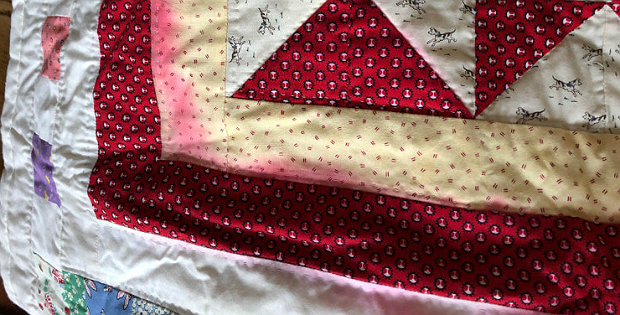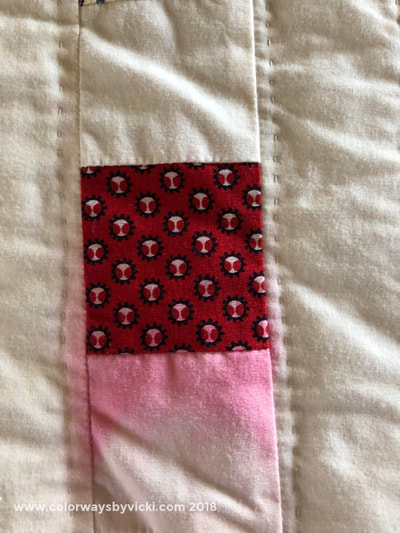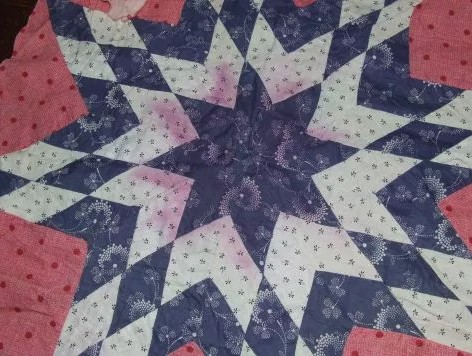How to Test Fabric for Bleeding and Why You Want To

Traditional Methods for Setting Dyes Don’t Always Work!
Do you skip pre-washing fabric and instead use Color Catchers, vinegar, or salt to prevent dye from bleeding to other parts of the quilt? You may want to rethink that approach, as it’s likely that you’ve simply been lucky to not have run into a bleeding problem – yet.
While today’s quilting fabrics tend to be more colorfast than ever before, some colors and dyes do run, and they may not always be the ones you’d expect. Red, navy, and purple are notorious, but other colors can bleed during the wash, as well. And, they may not do so until the quilt has been washed a few times.
Consequently, it’s a good idea to test fabrics for bleeding before using them. Janet Wickell has written an excellent article for The Spruce Crafts that explains how to test and what to do about a fabric that bleeds (don’t use Retayne, as that may make the problem worse).
So, what did we mean by that comment indicating that some dyes may not bleed until the quilt has been washed more than once? Vicki Welsh from colorwaysbyvicki.com has studied dyes and bleeding extensively, both in commercial and hand-dyed fabrics. She offered the following example:
“I recently bought a commercial purple fabric. I washed it once just to test my theory. I put in a color catcher to see if it bled in the wash. It didn’t. Then I soaked it overnight and by morning the water was DARK purple! It was eventually going to bleed during one of the washings had I not soaked that fabric because exposure to water is cumulative. “
Consequently, the standard bleeding test, as outlined in the article above from The Spruce Crafts, may not be enough to determine whether or not a fabric will bleed. When in doubt, or when choosing fabric for a special quilt, we recommend Vicki’s testing method.
Vicki has written an excellent article that provides important information about bleeding dyes. We recommend that every quilter read it.
While the article focuses specifically on washing a quilt for the first time, the same testing method can be used to determine whether a piece of fabric will eventually bleed while removing excess dye from one that will.
Photo from Tim Latimer – Quilts etc.
So, back to vinegar, salt, and Color Catchers. Some quilters swear by adding vinegar, salt, or both to the water when washing a quilt for the first time. While both of those, along with baking soda, may help set some dyes, they won’t work on all of them. So, you’re taking a risk if you rely on those to work 100% of the time.
Color Catchers are popular because they catch and trap dye that’s released in the wash so it doesn’t settle on other parts of the quilt. They can be helpful – but only if you use enough of them and continue for several washes.
Depending on the size of the quilt and the fabrics used, you may need to use 6 or more to capture all of the dye that’s released. And, you’ll need to do that for several washes, as some dyes may not be released the first few times the quilt is washed.
If you typically give a box of Color Catchers when gifting a quilt, be sure to explain how to use them to the recipient. Or, test and pre-wash the fabric before using it (better yet, pre-soak using Vicki’s method) and avoid potential problems altogether.
Image Source and Additional Information: “Let’s talk about bleeding fabrics” by Vicki Welsh.














Good grief! Don’t sew the pieces together before testing to see if the colors run. Put the newly purchased fabric into the washing machine with white tee shirts, white pillow cases, and sheets, white underwear, and you will find out soon enough!